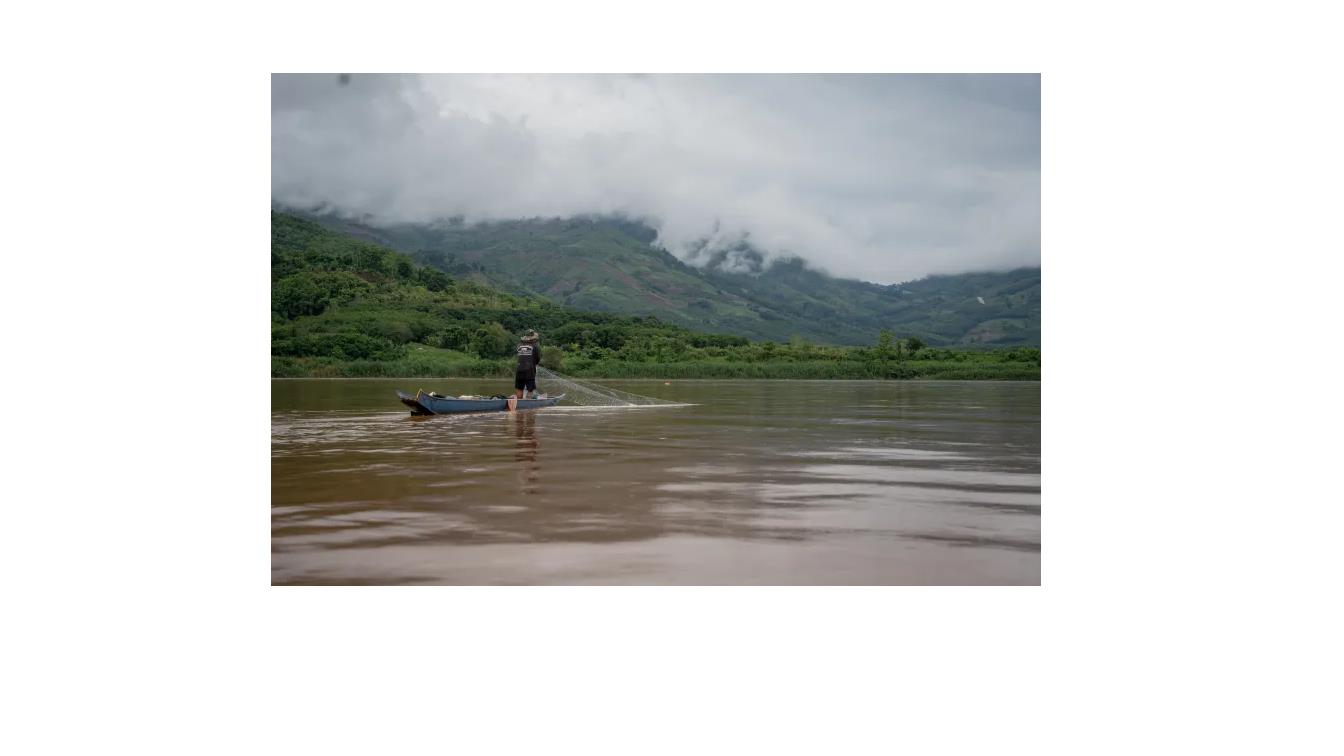A fisherman along the Mekong River in Bokeo province, Laos [Al Jazeera/Fabio Polese]
Fishing communities in Laos feel effect of pollution from gold, rare earth mining in rebel-controlled areas of Myanmar.
By Fabio Polese
Published On 1 Aug 20251 Aug 2025
Houayxay, Laos – Fishing went well today for Khon, a Laotian fisherman, who lives in a floating house built from plastic drums, scrap metal and wood on the Mekong River.
“I caught two catfish,” the 52-year-old tells Al Jazeera proudly, lifting his catch for inspection.
Khon’s simple houseboat contains all he needs to live on this mighty river: A few metal pots, a fire to cook food on and to keep warm by at night, as well as some nets and a few clothes.
What Khon does not always have is fish.
“There are days when I catch nothing. It’s frustrating,” he said.
“The water levels change all the time because of the dams. And now they say the river is polluted, too. Up there in Myanmar, they dig in the mountains. Mines, or something like that. And all that toxic stuff ends up here,” he adds.
Khon lives in Laos’s northwestern Bokeo province on one of the most scenic stretches of the Mekong River as it meanders through the heart of the Golden Triangle – the borderland shared by Laos, Thailand and Myanmar.
This remote region has long been infamous for drug production and trafficking.
Now it is caught up in the global scramble for gold and rare earth minerals, crucial for the production of new technologies and used in everything from smartphones to electric cars.
Over the past year, rivers in this region, such as the Ruak, Sai and Kok – all tributaries of the Mekong – have shown abnormal levels of arsenic, lead, nickel and manganese, according to Thailand’s Pollution Control Department.
Arsenic, in particular, has exceeded World Health Organization safety limits, prompting health warnings for riverside communities.
These tributaries feed directly into the Mekong and contamination has spread to parts of the river’s mainstream. The effects have been observed in Laos, prompting the Mekong River Commission to declare the situation “moderately serious”.
“Recent official water quality testing clearly indicates that the Mekong River on the Thai-Lao border is contaminated with arsenic,” Pianporn Deetes, Southeast Asia campaigns director for the advocacy group International Rivers, told Al Jazeera.
“This is alarming and just the first chapter of the crisis, if the mining continues,” Pianporn said.
“Fishermen have recently caught diseased, young catfish. This is a matter of regional public health, and it needs urgent action from governments,” she added.
The source of the heavy metals contamination is believed to be upriver in Myanmar’s Shan State, where dozens of unregulated mines have sprung up as the search for rare earth minerals intensifies globally.
Zachary Abuza, a professor at the National War College in Washington and an expert on Southeast Asia, said at least a dozen, and possibly as many as 20, mines focused on gold and rare earth extraction have been established in southern Shan State over the past year alone.
Myanmar is now four years into a civil war and lawlessness reigns in the border area, which is held by two powerful ethnic armed groups: the Restoration Council of Shan State (RCSS) and the United Wa State Army (UWSA).
Myanmar’s military government has “no real control”, Abuza said, apart from holding Tachileik town, the region’s main border crossing between Thailand and Myanmar.
Neither the RCSS nor the UWSA are “fighting the junta”, he said, explaining how both are busy enriching themselves from the chaos in the region and the rush to open mines.
“In this vacuum, mining has exploded – likely with Chinese traders involved. The military in Naypyidaw can’t issue permits or enforce environmental rules, but they still take their share of the profits,” Abuza said.
‘Alarming decline’
Pollution from mining is not the Mekong River’s only ailment.
For years, the health of the river has been degraded by a growing chain of hydropower dams that have drastically altered its natural rhythm and ecology.
In the Mekong’s upper reaches, inside China, almost a dozen huge hydropower dams have been built, including the Xiaowan and Nuozhadu dams, which are said to be capable of holding back a huge amount of the river’s flow.
Further downstream, Laos has staked its economic future on hydropower.
According to the Mekong Dam Monitor, which is hosted by the Stimson Centre think tank in Washington, DC, at least 75 dams are now operational on the Mekong’s tributaries, and two in Laos – Xayaburi and Don Sahong – are directly on the mainstream river.
As a rule, hydropower is a cleaner alternative to coal.
But the rush to dam the Mekong is driving another type of environmental crisis.
According to WWF and the Mekong River Commission, the Mekong River basin once supported about 60 million people and provided up to 25 percent of the world’s freshwater fish catch.





